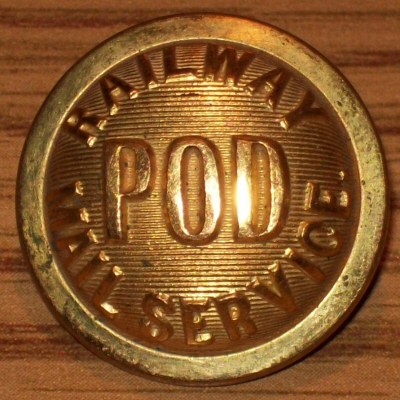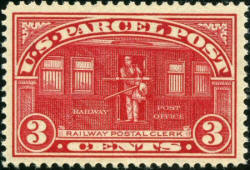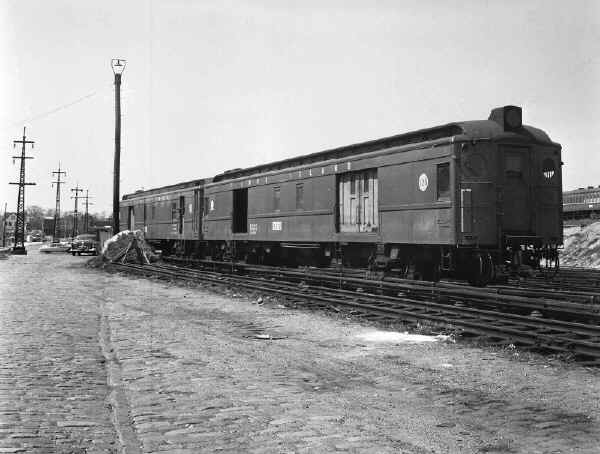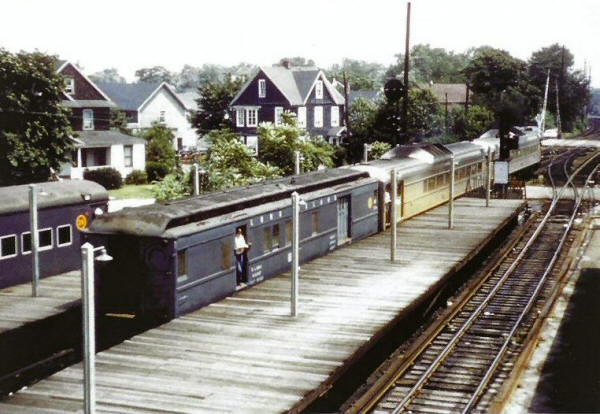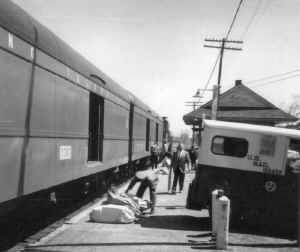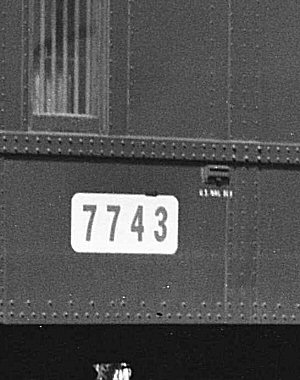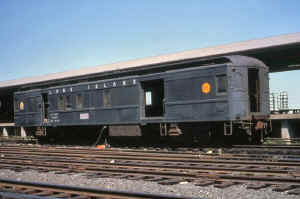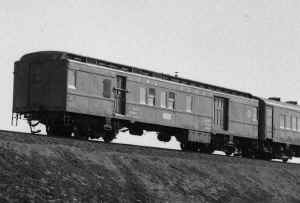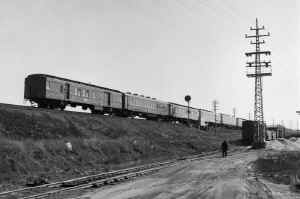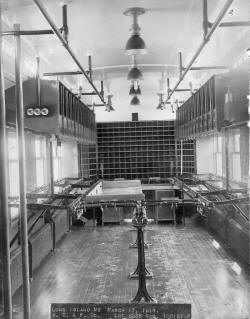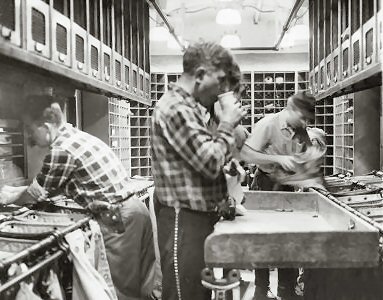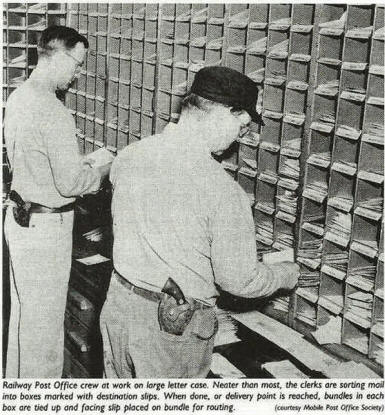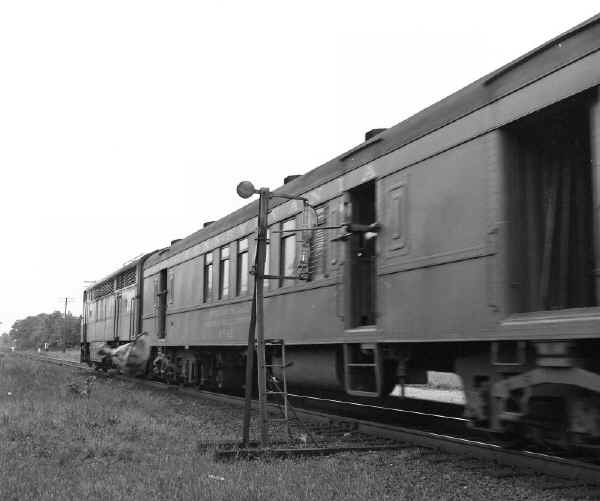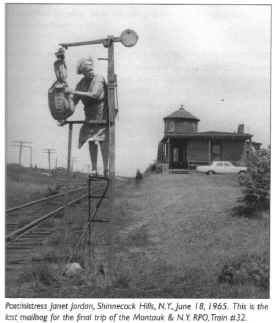RAILWAY
POST OFFICE SERVICE
on the LONG ISLAND RAIL ROAD
All
photos/research are from the archive of David Keller unless noted otherwise.
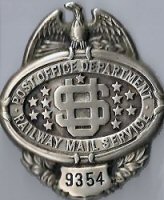
US Post Office Department
Railway Mail Service badges
worn on the jacket or coat.
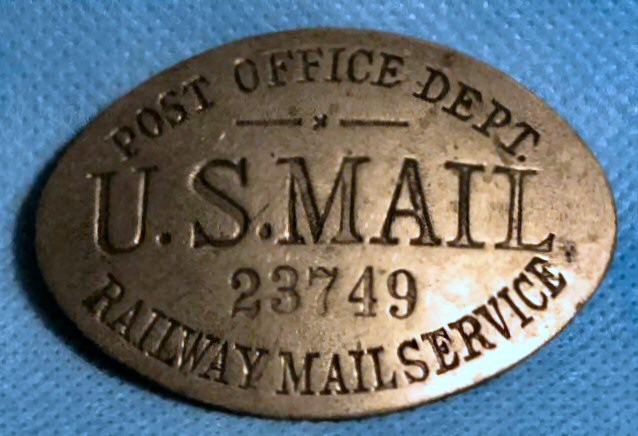
US Mail Post Office Department Railway Mail Service cap badge. It had a plain, pin-type clasp on the back, for attachment to the cap; No posts or fasteners like a trainman's badge.

RAILWAY MAIL SERVICE - A Brief History
At least three decades before the Pony Express galloped into postal history, the "Iron Horse" made a formal appearance. The Post Office Department recognized the value of this new mode of transportation for mail as early as November 30, 1832, when the stage contractors on a route from Philadelphia to Lancaster, Pennsylvania, were granted an allowance of $400 per year "for carrying the mail on the railroad as far as West Chester (30 miles) from December 5, 1832."
After passage of the Act of July 7, 1838, designating all railroads in the United States as post routes, mail service by railroad increased rapidly.
At this time, mail was sorted in distributing post offices. The only mail sent to the agents on the railroad lines was that intended for dispatch to offices along each route. The route agents opened the pouches from the local offices, separated the mail for other local points on the line for inclusion in the pouches for those offices, and sent the balance into the distributing post offices for further sorting. Gradually, the clerks began to make up mail for connecting lines, as well as local offices, and the idea of distributing all transit mail on the cars slowly evolved.
By 1930, more than 10,000
trains were used to move the mail into every city, town, and village in the
United States. Following passage of the Transportation Act of 1958, mail
carrying passenger trains declined rapidly. By 1965, only 130 trains carried
mail; by 1970, the railroads carried virtually no First-Class Mail. On April
30, 1971, the Post Office Department terminated seven of the eight remaining
routes. The lone, surviving railway post office ran between New York and
Washington, D.C., and made its last run on June 30, 1977. Information
courtesy of the United States Postal
Service
The Long Island Rail Road
Company,
chartered in April, 1834 and with its
Carrying the mail by rail was originally a very lucrative venture and railroads as well as trolley lines eventually all competed to win these government contracts. Another milestone was the establishment of the Railway Mail Service in 1864 which standardized a lot of the mail carrying.
Seeing that the alternative back then in the early days of mail carrying was horse and rider or horse and wagon over unpaved dirt roads, trails, paths or old wooden planked turnpikes, mail-via-rail proved to be a more efficient and quicker means of transporting the mail.
As the mail service handled by the railroads and trolley lines began to grow, special cars were constructed to not only carry the mail, but to be able to sort the mail by destination so that upon arrival at a terminal, the mail would be sorted and bagged and sent on its continued destination.
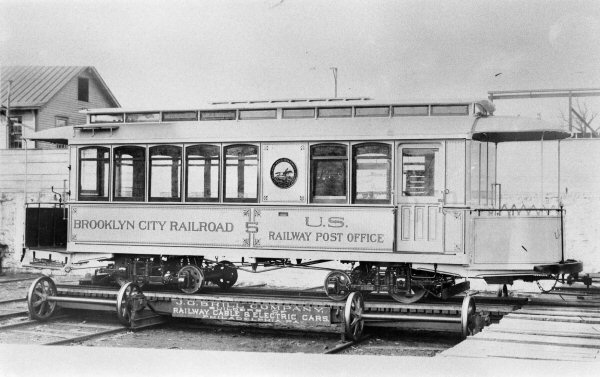
Shown
here is a J. G. Brill builder’s photo of trolley car #5 built for the
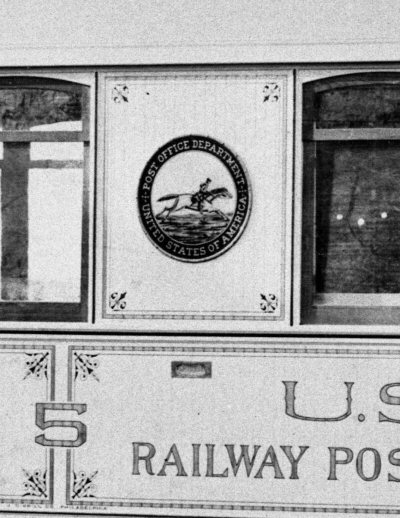
This
is a close-up of the
The railroads began to purchase cars from railroad car manufacturers designed specifically for this service. Such cars were referred to as Railway Post Office (RPO) cars and on the LIRR there were different types of cars for mail service.
The cars for which I have photographic record in my archive are of all steel construction and those are which will be depicted in this vignette.
Some of the steel cars were ½ mail car and ½ express car and the mail end would be stenciled “Railway Post Office” and the express end would be stenciled “Railway Express Agency” or whatever express company was in force at the time (Adams Express, American Railway Express, Railway Express Agency). The mail compartments on board were 30’ in length.
Some cars were built as baggage cars to which mail compartments were added by the LIRR itself over the years then said compartments were removed when they were no longer needed.
There were RPO cars in both MU (multiple unit) electric service and in steam/ diesel service.
The steam/diesel service cars which had compartments added bore the class of BM60: “B” meaning “Baggage” and “M” meaning “Mail” and the 60 being the length of the car in feet.
Other classes which were equipped with 30’ postal compartments were BM62, BM62A and BM62B.
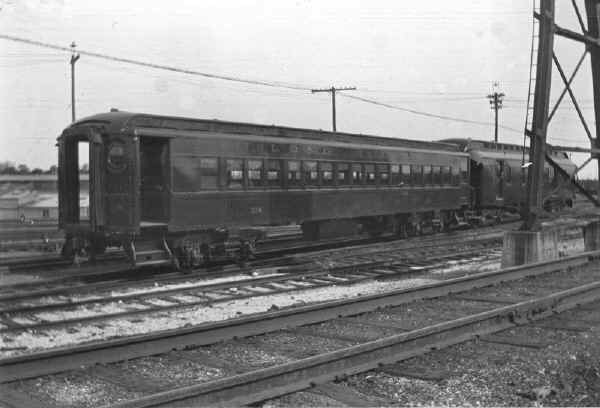
P54A steam car #334 is seen
here coupled to a wooden RPO car in the Richmond Hill Storage Yard.
#334 was built by American Car and Foundry in 1911. View is southwest
looking towards Morris Park Shops in September, 1913. The paint job still
looks good after two years. (Dave Keller archive)
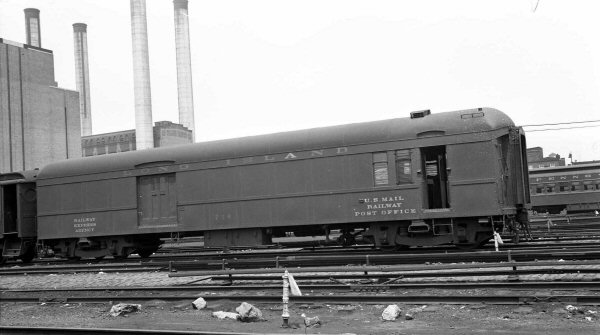
Here
is RPO car #738 photographed at the
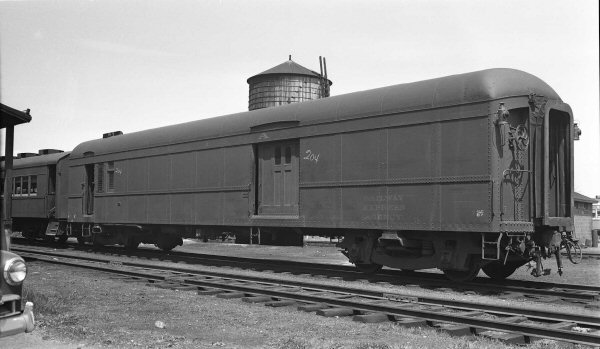
The
same car, #738, is shown here at
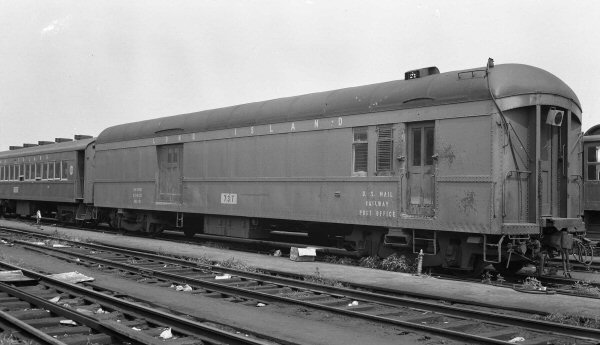
RPO
car #737 has been photographed at the storage yard in
MU
Railway Express Agency car #4212 and Railway Post Office car #4209 are
coupled as a two-car "mail/express train" and as such is laying up
in the Johnson Ave. Yard in Jamaica in April, 1962. The yard was
located south and slightly west of the Jamaica station tracks and near the
Dunton Electric Car Shops. Nearby was the LIRR's freight station.
This view is looking west. (Brad Stiles photo, Dave Keller archive)
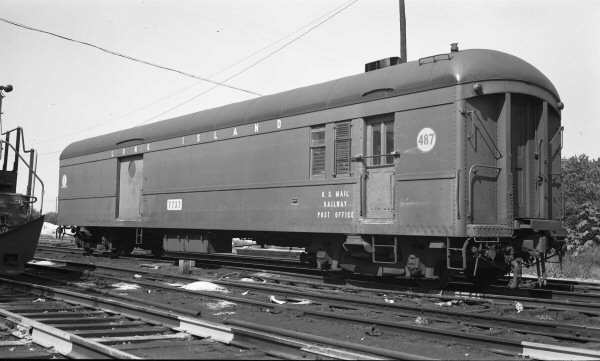
RPO
car #737 is seen again here at Port
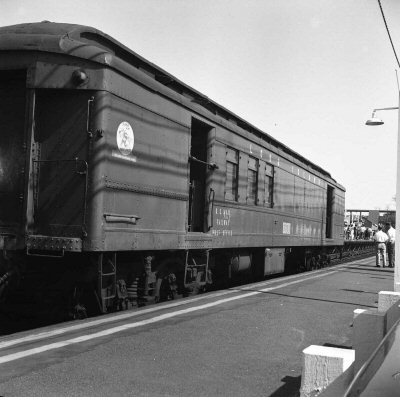
RPO
car #7751 is shown here at the temporary station facilities at
BM62 car #7743 was specifically assigned to the New York and Patchogue Railway Post Office run, operating on MU trains west of Babylon and behind Rail Diesel Cars (BUDD RDCs) east of Babylon. This car was unique in that it had electric and steam heat as well as a small kerosene heater for when in service behind the RDCs.
BUDD Rail Diesel Cars (RDC) 1-2, #s 3121, 3101, coupled are seen pulling the
Babylon-Patchogue “Scoot” BM62 RPO car #7743 eastbound leaving Babylon
Station
in the 1960's. At left is the
MU passenger transfer train.
Photo: Malcolm Young Archive: Mike Boland
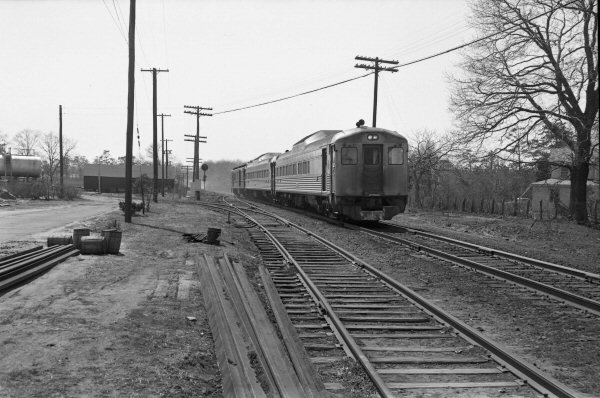
BUDD
Rail Diesel Cars (RDC) 1 and 2, #s 3121, 3101, coupled are seen in
Patchogue-Babylon “Scoot” service pulling the RPO car #7743 from Babylon
eastbound approaching the River Avenue crossing in Patchogue on April 6,
1963 (William Lichtenstern
Pulling this mail car trailer (as well as the occasionally class P54 passenger trailer) by the BUDD RDCs caused the warranty of the Rail Diesel Cars to be voided by the BUDD Company.

Here is RPO car #7743 after it has been dropped off at Patchogue by the RDCs pulling the “Scoot” from Babylon shown above on April 6, 1963. The doors are open and the postal workers are awaiting the mail from the Patchogue Post Office to be delivered so it can be loaded on board. This car, a product of American Car & Foundry, was built in 1911 and was classed BM62. Its original road number was 743 but after its modernization it was renumbered to 7743 and assigned modernization number 65, which is visible in the circle at the far end of the car. (William Lichtenstern photo)
.jpg)
The westbound Patchogue-Babylon RPO run was routed to track #4 at Jamaica and dropped the RPO car. LIRR GS4 #400 was waiting in the yard east of the station and then closes in on the car, couples and shoves it to the west end of the yard west of Jamaica station, where it can then proceed back eastward to the Advance Yard and the Mail Dock. June, 1955 view SW. "JAY" tower in right background. Loco is still sporting Tichy scheme, but it's well-weathered. Photographer unknown.
The MBM62 were RPO/REA cars:
.jpg)
MU
RPO/REA car #1209 is a MU motor unit and is on the business end of this
train awaiting departure westbound at the station in Hempstead on June 25,
1946. Visible inside the car as well as outside are the barred
security windows. (George V. Arnoux photo)
The MPBM54 were RPO/Combine cars, meaning the car handled mail, baggage/express AND carried passengers.
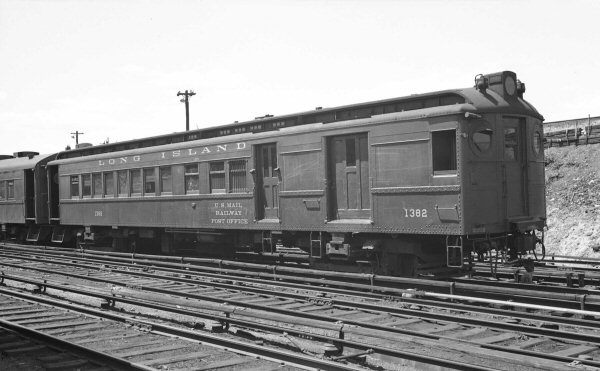
Class
MPBM54 RPO MU car #1382 is seen here at
.jpg)
Class MPBM54 RPO MU Combine car #1384 is seen here at Morris Park (Rugen-Huneke)
Handling the mail was a serious business and mail handlers on board trains had to observe security precautions. Windows on the cars were barred, doors were locked and employees wore sidearms. BM62 interior photo: ACF 3/17/1914
Beginning in 1921, RPO
clerks were required to carry revolvers, surplus WWI Army Colt 45s. Due to their size and weight, it was not necessary that the revolvers be worn by the clerks, but they had to keep them handy should they be needed. These guns were replaced in the 1930s by the Post Office Department's snub nosed 38s. Because these guns were of a smaller size and of lighter weight, clerks were required to wear them at all times while on duty
Info: Clarence R. Wilking
Here’s
a view of mail handlers inside a LIRR RPO car taken on June 18, 1965, the
last day mail was carried on the LIRR. You’ll see the POD employee
at the left is wearing his sidearm while on duty. The
holsters were leather with “Property of
Mail
handlers on board new runs had to practice their sorting so they would be
proficient on whatever line they were assigned. To this end, RPO
“practice cases” were available as were small cards for the handlers to
practice sorting into the various “pigeon-holes” in the box, which, as
you can see below, is a smaller version of the full-sized racks seen in the
car interior photo above.
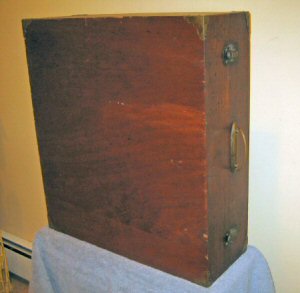
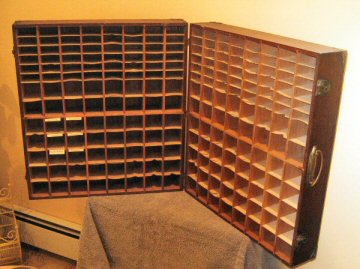
(Both photos courtesy of David M. Morrison)
Mail could be dropped by individuals wishing to mail a letter into a RPO car while it was sitting at the station platform. A typical mail slot was installed in the side of the car near the door and it was of sufficient height to be reached by someone standing on the platform.
Clerks in charge of RPOs had to have stamps available, in case they were needed by the public. Stamps on letters mailed at the postal car or at depot letter boxes were canceled by a hand postmarker, showing the name of the RPO, the train number, and the date. Info: Clarence R. Wilking
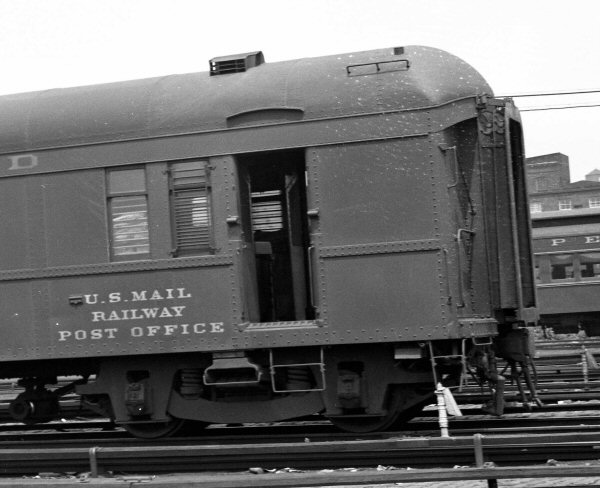
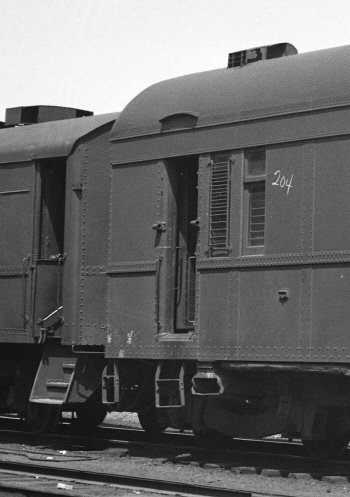
.jpg)
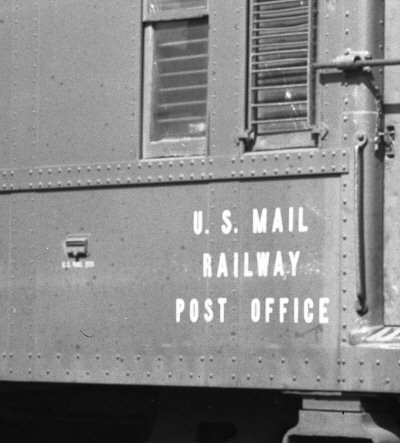
These
four images are close-ups of the images of the cars posted above to show the
location of the mail slot built into the side of the car to allow people
needing to mail a letter while at the station to drop it conveniently in the
side of the car, probably on the very train in which they will soon be
riding.
MAIL
CRANES:
Starting in 1869, railroad companies installed mail cranes for the exchange of non fragile mail at non stop stations. There were two arms on the crane, the upper arm pointing up and the lower arm pointing down when not in use. There was a swivel pin at the end of each arm, where the catcher pouch was attached. These arms were folded parallel toward the track when the pouch was hung, the spring tension of the arms holding the pouch about three feet from the side of the train. As soon as the pouch was caught, the arms sprang back to their original position. The crane had to be installed in perfect alignment, as to its height and its distance from the track.
If the exchange was made after dark, a lighted lantern was hung on the crane. It was the duty of the mail messenger who carried the mail between the post office and the station to witness the exchange. It was the engineer's duty to give a station whistle (one long), allowing the clerk time to get to the door. A good "local clerk" had his own landmarks or sounds and did not depend on the engineer's whistle. In later years, safety goggles were provided to clerks making local exchanges. Thousands of these exchanges were made each day by the
RPOs.
Info: Clarence R. Wilking
Bags
of mail were brought to and from the respective Post Offices and railroad
stations to be loaded on the train or taken back to the Post Office. My
father remembers the Postmaster at Holtsville meeting the train with the
mail bag in a wheelbarrow. The Post Office at that time was in an old
general store called Lydecker’s which used to
stand facing
If
the train were to stop, the bag would be manhandled up onto the car for
loading or manhandled off the car into some form of conveyance . . . . a
truck . . . a postal worker’s car trunk or, as in the case at my hometown
of Holtsville, the Postmaster’s trusty old wheelbarrow for the “trip”
back to Lydecker’s store.
However,
most times mail was picked up “on the fly” meaning the train didn’t
stop. This was effected by a POD employee or, in some instances, a
designated railroad employee lugging the hefty mailbag to a trackside mail
crane. He climbed the ladder and hooked the top of the mailbag on the
upper arm and then yanked the lower arm down and hooked the bottom of the
mailbag to it, stretching the bag taught.
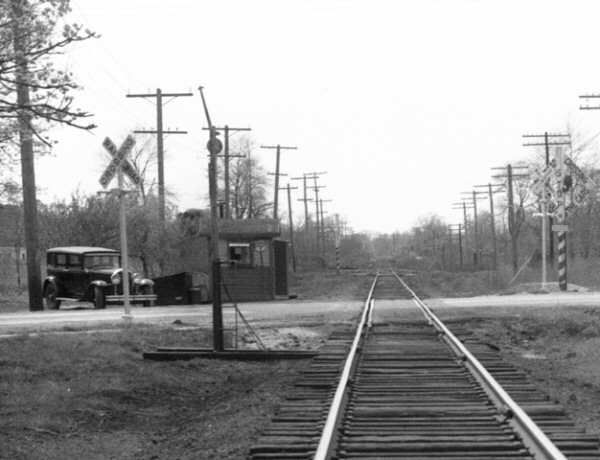
crane for mail pickup. The crane arms are at rest.
View is looking west towards the crossing shanty on April 24, 1946 (Fred
Weber photo)
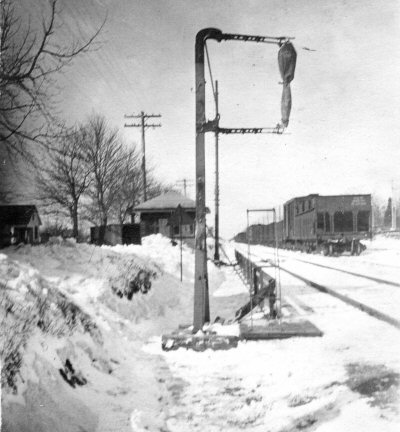
This view is of the mail crane at
The
procedure for pickup was like the engineer and conductor of a moving train
catching train orders without stopping . . only
a metal arm on the train was used to grab the heavily reinforced leather bag
instead of human arms to grab the flimsy order on a length of knotted cord!
The
steel bar attached to the side door of the RPO car was swung from the
“out-of-service” position of straight down, to the “in-service”
position of straight out. The bar would lock in place and it’s
location across the car door also acted as a guardrail to keep the mail
handler from falling out of the moving train.
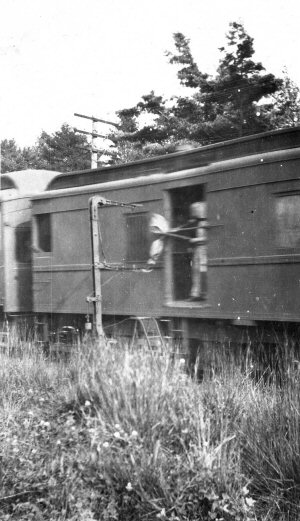
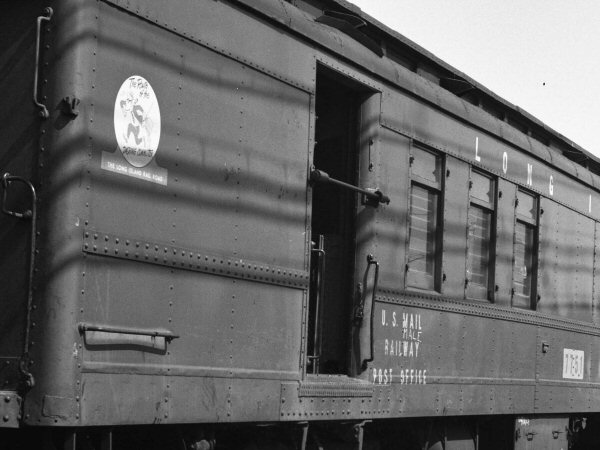
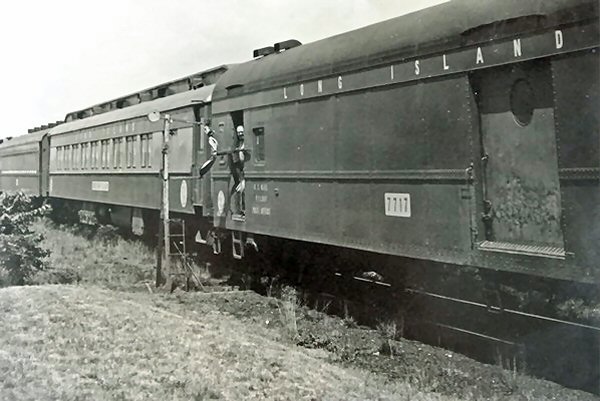
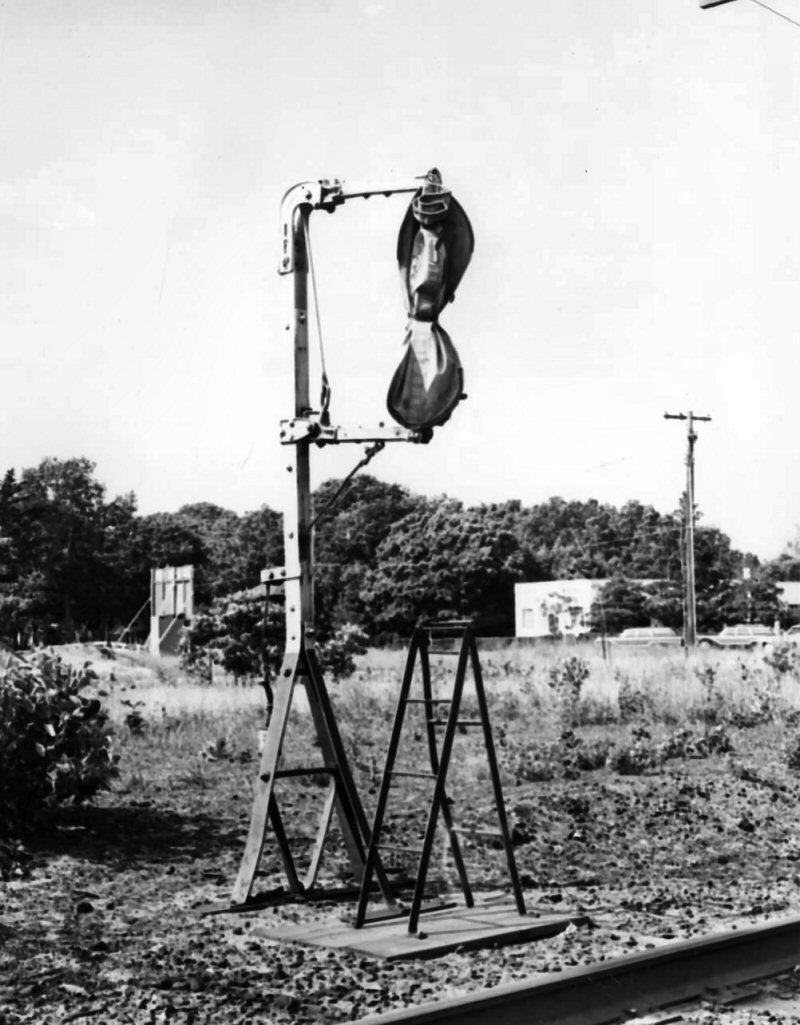
CATCHER POUCHES:
Catcher pouches were subject to very hard use, both by being thrown from the train when dispatching and by being caught from the crane. They were made of very heavy canvas, reinforced with leather on both ends, where there were large iron rings for attaching the pouch to the crane. The mail was equally divided in the pouch and a strap in the center was drawn tight; that was the point at which the end of the catcher arm first made contact. The pouch was hung on the crane in an upside down position.
Info: Clarence R. Wilking
We’re
looking at the mail crane again at
Once
the bag was snagged, the momentum of the train and the resulting breeze kept
the bag wrapped around the steel bar until the mail handler would lug the
bag inside the train to be opened and sorted into various other destination
bags on board.
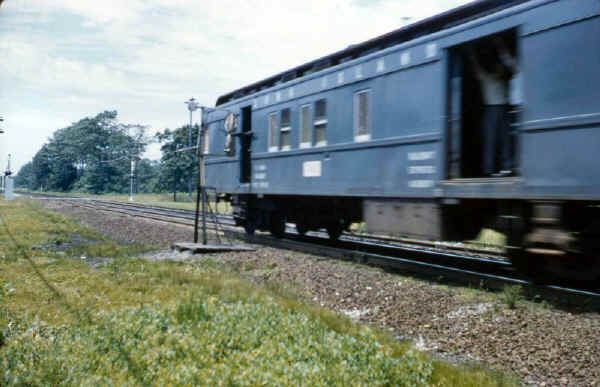
RPO/REA car
#7743 catching mailbag on the fly at Bayport, NY – August, 1958
(Art
Huneke photo, Dave Keller archive)
In
reverse operation, the mail bag, if on a non-stop train, would be tossed off
in the vicinity of the mail crane while the train was at speed and the
designated railroad employee would retrieve the bag, bring it into the
ticket office and await its pickup by one of the postal employees from the
local Post Office in town.
This
tossing of the bag from a moving train created a problem initially.
Sometimes the bags would hit the hard ground and bounce back up and go under
the wheels of the train where the bag would be run over, severed and the
mail strewn all over.
To
avoid this mishap, low, slat fences were installed in the “dump zone”
trackside so that the bag, if bouncing back up, would hit the wooden slat
fence and stay contained AWAY from the rails and the moving steel wheels.
If you refer to the image above of the mail bag on the crane at Central Islip in the snowy, winter view, look at the base of the crane and beyond . . . you’ll see the slat fence to stop the mailbag from going under the train.
LIRR
FM CPA20-5 #2001 is pulling a Pennsylvania R.R. RPO car which is not only
about to pick up the suspended mailbag from the trackside mail crane, but
also shows a mailbag for local delivery airborne in the process of being
tossed-off. The foldout metal bar on the car door is about to hit the racked
mailbag dead-center. Eastbound at Blue Point - 1951.
The photo was taken just after diesels took over the LIRR. I always wanted a picture of a train picking up mail but I had forgotten railway mail pick-up rule #1: What gets picked up also is detrained.
Anyhow, I felt an object go whizzing by my head just as I snapped the photo. It was the off-loaded bag and it missed me by inches. It appears in the photo just about at the coupling point of the engine and RPO car. I was lucky--another few inches and my brain would have been scattered along the ROW and deservedly so.
Well, it was a lesson I would never forget! Info/Photo: Stephen Myers
As
mentioned earlier, mail was sorted on the moving train and the letters, etc.
were also cancelled on board. This created another railroad-related
hobby of collecting stamped “RPO” covers some of which are depicted
below.
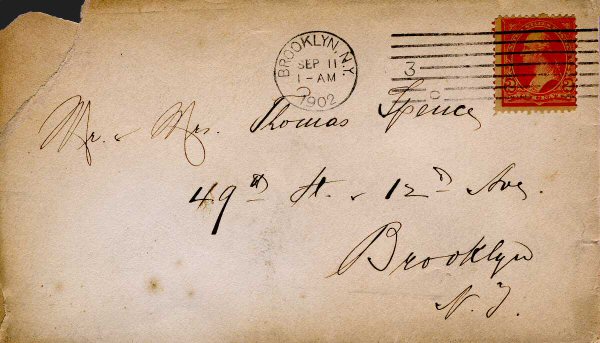
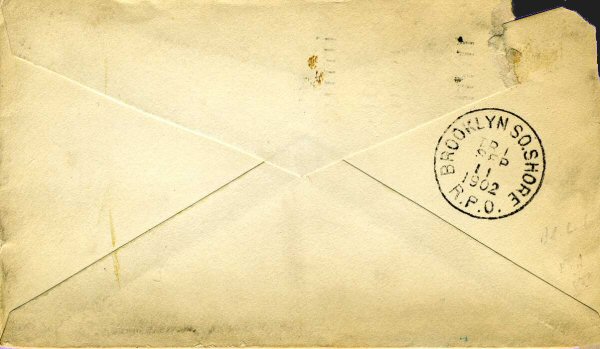
This
old cover from September 11, 1902 shows a scan of the front as well as the back of the
envelope because this envelope was carried partly by regular carrier and
partly by train. You’ll see the front of the enveloped is postmarked
in a normal fashion in Brooklyn but on the BACK of the envelope, we see the
railroad postmark of “
A
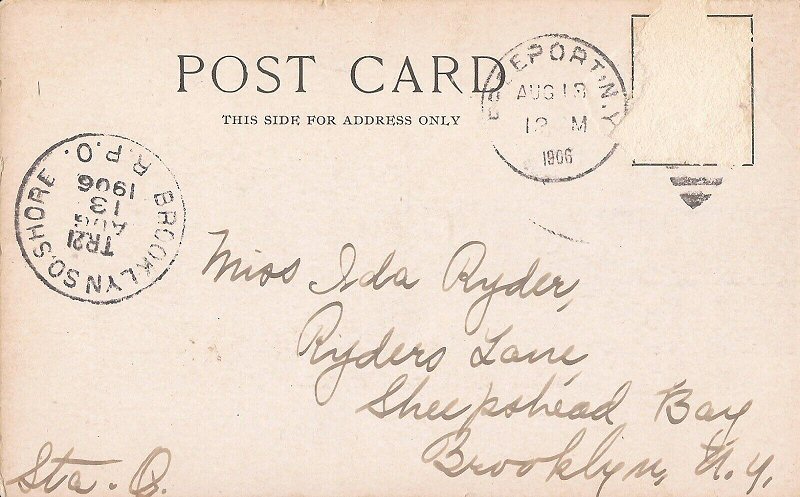
The
RPO postmark consisted of the route (ex: “Montauk and NY”), the specific train upon which the letter was
carried and cancelled, the postmarked date and the indication of “R.P.O.”
The franking, or cancellation, of the stamp reads “RMS” which
stood for “Railway Mail Service.” According to fellow LIRR historian Art Huneke, each branch that
handled the mail was a separate contract between the LIRR and the US Post
Office Department.. . and, while all branches carried the mail, not all
branches sorted the mail, although most did.
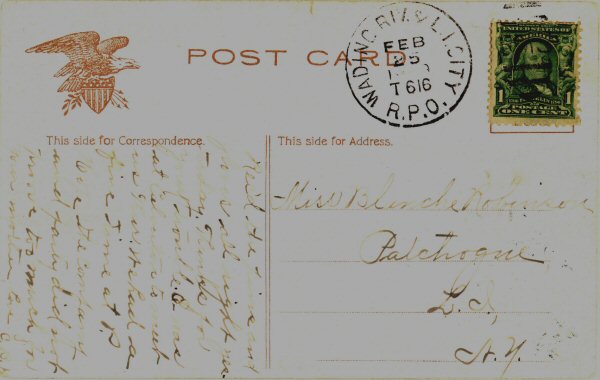
This cover
from 1909 is postmarked “
You’ll
notice in the envelope below everything described above,
however you’ll notice TWO train numbers indicated:
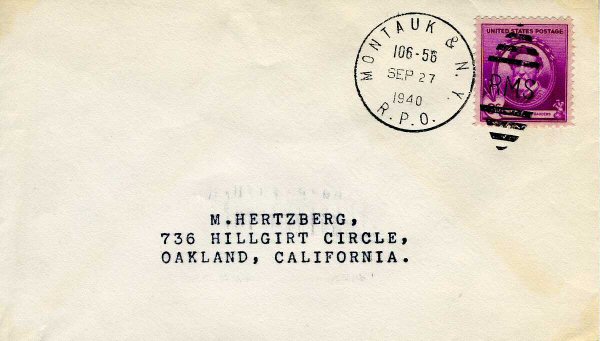
This
postmark indicates “106-56” as the train numbers. It
tells us that the envelope was carried on train #106 from Penn Station to
Indicated below are some of the route names found on the LIRR’s RPO post markings:
Greenport
& N.Y.
Montauk
& N.Y.
Port
Jeff & N.Y.
Wading
Port Washington &
N.Y. & Far Rock
Sag Harbor & L. I. City
Oyster Bay
More RPO postmarks and cancellations . . . .

RPO Oyster Bay & L. I. City - 10/21/1912 - Scott UX24 1¢
McKinley Postal Card Collection: Dave Keller
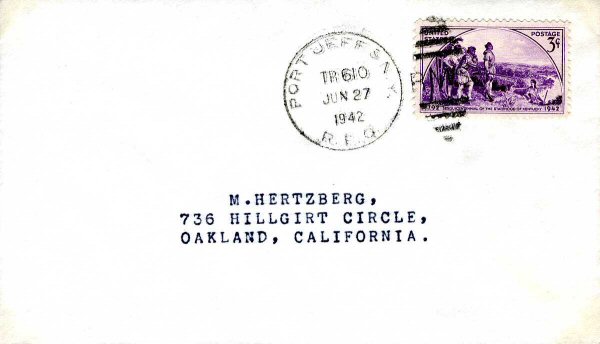
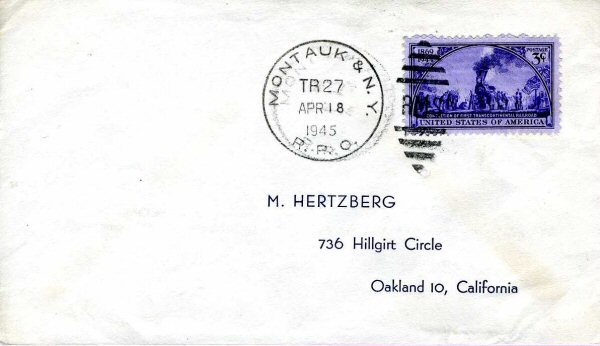
Mail service in third rail territory came to an end before it ended in steam/diesel territory. .. sometime in the 1940s and1950s . . . and the MU cars that were equipped for mail service had their steel grab bars removed and the cars became baggage/express cars.
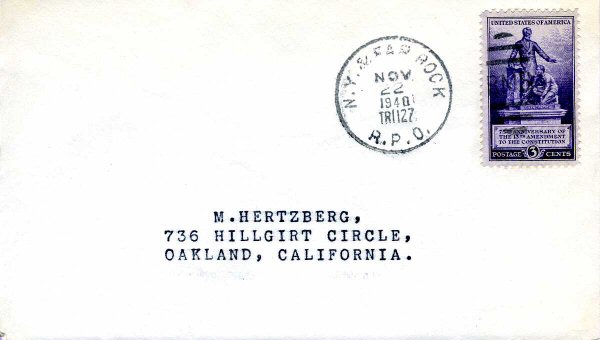
This
is an RPO postmark and cancellation from electric (third rail)
territory: The cover would have been handled on a MU Motor RPO car as
shown above and operating on the LIRR’s Far Rockaway branch, a branch that
is all electrified. The postmark reads “N.Y. & Far Rock” and
was handled on train #1127 on November 22, 1940.
Mail service in steam/diesel territory lasted much longer until it eventually came to an end due to the convenience and cheaper carrying of mail by truck and because the mail contracts over the years became more of an inconvenience and less of a money-making proposition than they had been initially.
Some post offices were actually located in the LIRR depots themselves. The Plandome Post Office was part of the old Plandome depot along the Port Washington branch and the Mill Neck depot along the Oyster Bay
While
the Shinnecock Hills depot was once a station
stop along the LIRR’s Montauk branch east of
the

MBM62c USPS mail delivery at Merrick Archive: Emery-SUNY Stony Brook
As an eastbound
MU electric train blocks the crossing at the Merrick station to make the
scheduled station stop on c.4/1/1965+, two U.S. Post Office Department
mail trucks have backed up on the street, close to the head-end RPO/REA
car to off-load mail from the train for processing and sorting for delivery
at the local postal facility. The motorman is keeping an eye on the
postal workers, probably anxious to be underway to escape the taunts from
irritated drivers trying to get to work. Railway Post Office service
was to come to an end on the LIRR a few months later. (Dave Keller
data)
The last train to carry mail on the Long Island Rail Road was train #37 running from Speonk to Jamaica
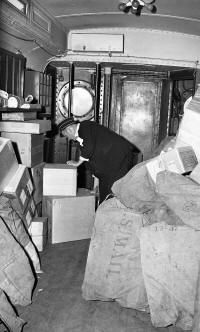
Bulk mail was carried until 1952, but it did not get cancelled on board the
train. The train simply carried mailbags as is seen in this image
photographed on the Port Washington branch on 09/20/46.
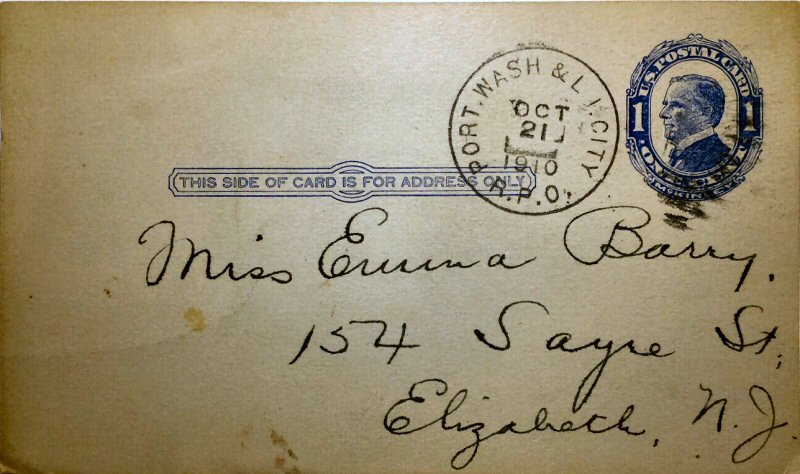
LIRR RPO cancel Scott UX22 1¢ postal card -Port Washington Branch
10/21/1910 Archive: Dave Keller
THE END OF
RPO SERVICE
All
photos/research above are from the archive of Ron Ziel unless noted otherwise.
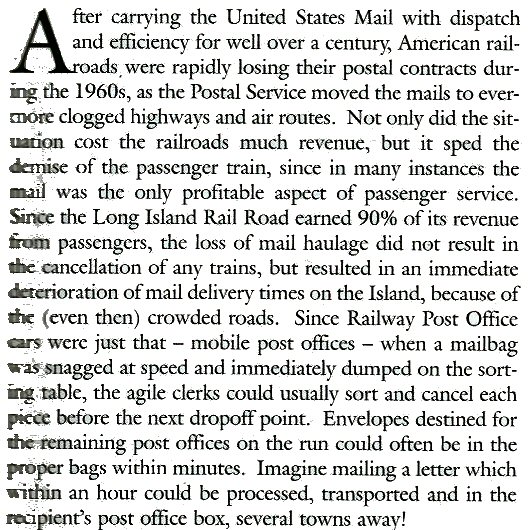
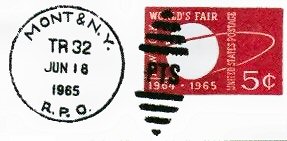
Last Last day of RPO Service: June 18, 1965 Cancellation
Train 32 Montauk to NY
Postmistress Janet Jordan, Shinnecock
Hills, attaches the last
mailbag for the final trip June 18, 1965 Train 32 Montauk to NY
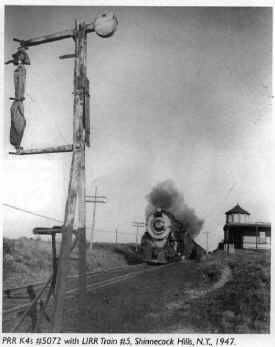
Mail crane Shinnecock Hills 1947
Archive: Ron Ziel
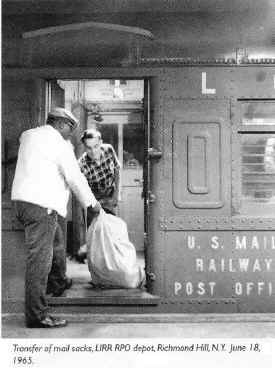
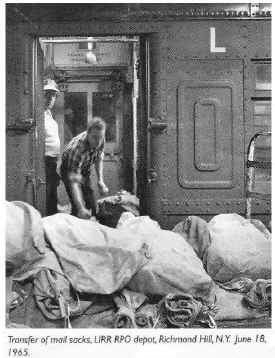
Transfer of mail sacks RPO depot Richmond Hill 6/18/65 Archive: Ron Ziel
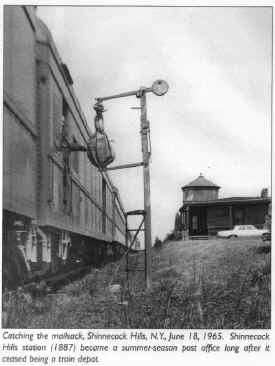
Mail crane Shinnecock Hills 6/18/1965
Archive: Ron Ziel
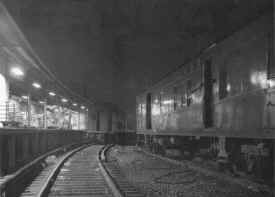
RPO Depot Richmond Hill - RPO #7743 6/18/1965 Archive: Ron Ziel
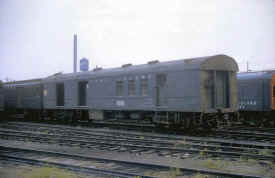
BM60D RPO Baggage #7753 built 1929 ex-BM at MORRIS PARK 6/22/1965 (Rugen-Huneke)
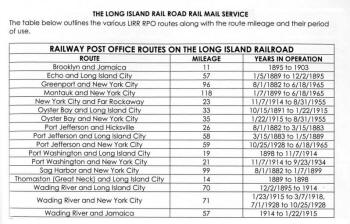
LIRR RPO Routes Research: Kevin Katta
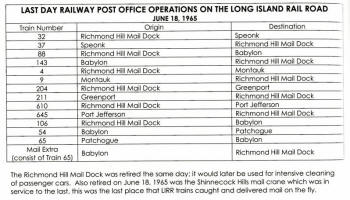
LIRR RPO Last Day of Operations 6/18/1965 Research: Kevin Katta
Port Jefferson Branch RPO service
lasted to just about the end, 6/18/1965. Oyster Bay was 8/31/1955. From
Employee Timetable No. 2 dated May 8th, 1955 in the Special Instructions,
mail was carried on the following Oyster Bay trains eastbound only: 512 &
548 only to discharge mail at Floral Park. Oddly, there is no mention of
mail work on the Port Jefferson Branch. Info: Ben Jankowski
ETT effective May 17, 1964 mail delivery was still in effect on a number
of branches: Port Jefferson, Montauk, Greenport, Babylon, Long Beach,
Hempstead and West Hempstead. Oyster Bay was NOT one of them. Research: Dave
Keller
Note: The US Postal Service NY Mail Platform was/is between the ladder tracks to platforms 1-4 and Yard E, directly under the Manhattan Post Office. Info: Dave Barraza
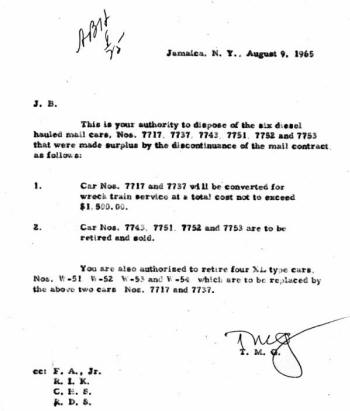
Retire: W51-W54 replaced by RPO 7717 and 7737 converted for wreck train service.
Dispose of: RPO 7743 7751 7752 7753 8/09/1965 Archive: Mike Boland
